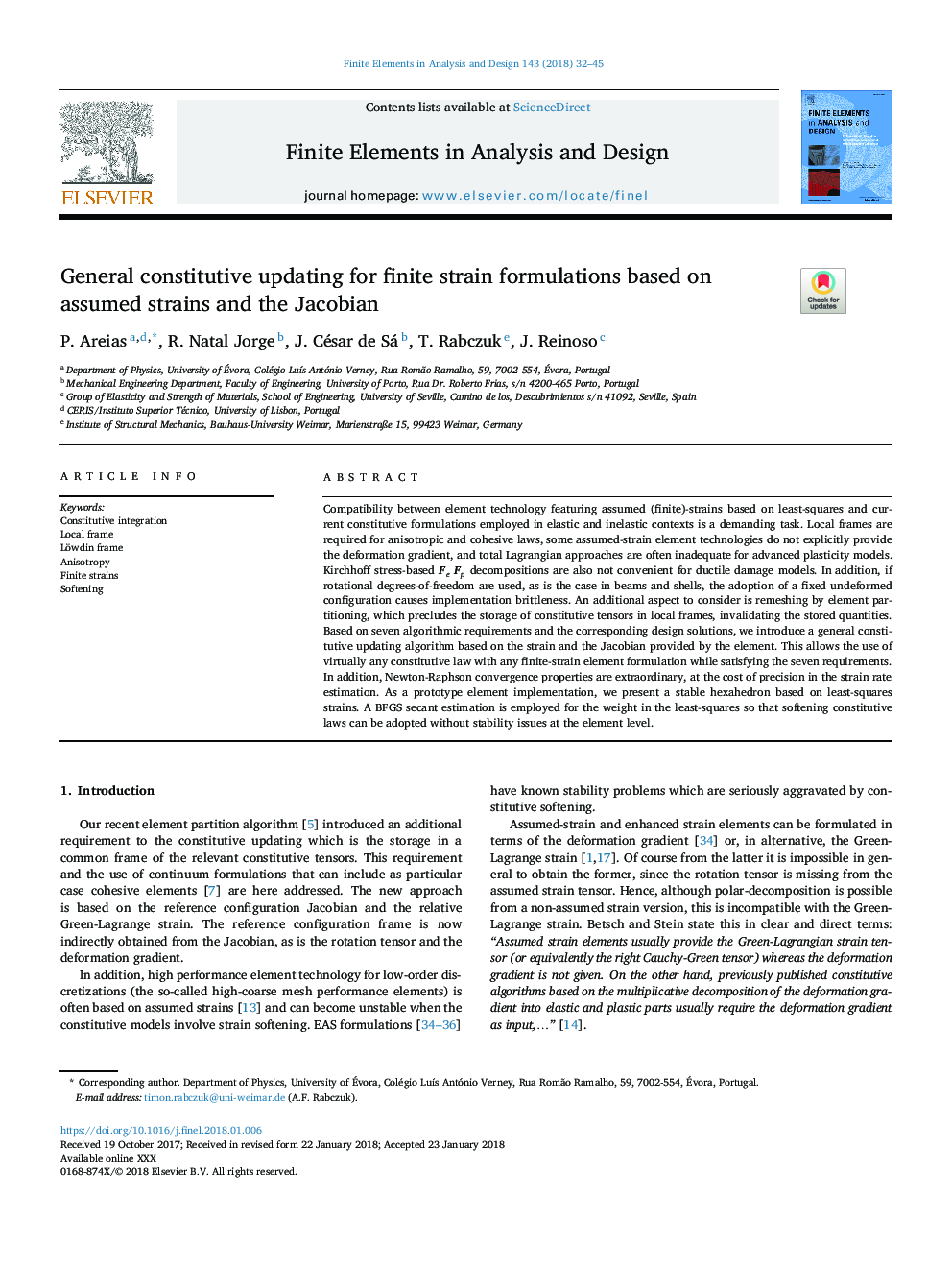| Article ID | Journal | Published Year | Pages | File Type |
|---|---|---|---|---|
| 6925380 | Finite Elements in Analysis and Design | 2018 | 14 Pages |
Abstract
Compatibility between element technology featuring assumed (finite)-strains based on least-squares and current constitutive formulations employed in elastic and inelastic contexts is a demanding task. Local frames are required for anisotropic and cohesive laws, some assumed-strain element technologies do not explicitly provide the deformation gradient, and total Lagrangian approaches are often inadequate for advanced plasticity models. Kirchhoff stress-based FeFp decompositions are also not convenient for ductile damage models. In addition, if rotational degrees-of-freedom are used, as is the case in beams and shells, the adoption of a fixed undeformed configuration causes implementation brittleness. An additional aspect to consider is remeshing by element partitioning, which precludes the storage of constitutive tensors in local frames, invalidating the stored quantities. Based on seven algorithmic requirements and the corresponding design solutions, we introduce a general constitutive updating algorithm based on the strain and the Jacobian provided by the element. This allows the use of virtually any constitutive law with any finite-strain element formulation while satisfying the seven requirements. In addition, Newton-Raphson convergence properties are extraordinary, at the cost of precision in the strain rate estimation. As a prototype element implementation, we present a stable hexahedron based on least-squares strains. A BFGS secant estimation is employed for the weight in the least-squares so that softening constitutive laws can be adopted without stability issues at the element level.
Related Topics
Physical Sciences and Engineering
Computer Science
Computer Science Applications
Authors
P. Areias, R. Natal Jorge, J. César de Sá, T. Rabczuk, J. Reinoso,
